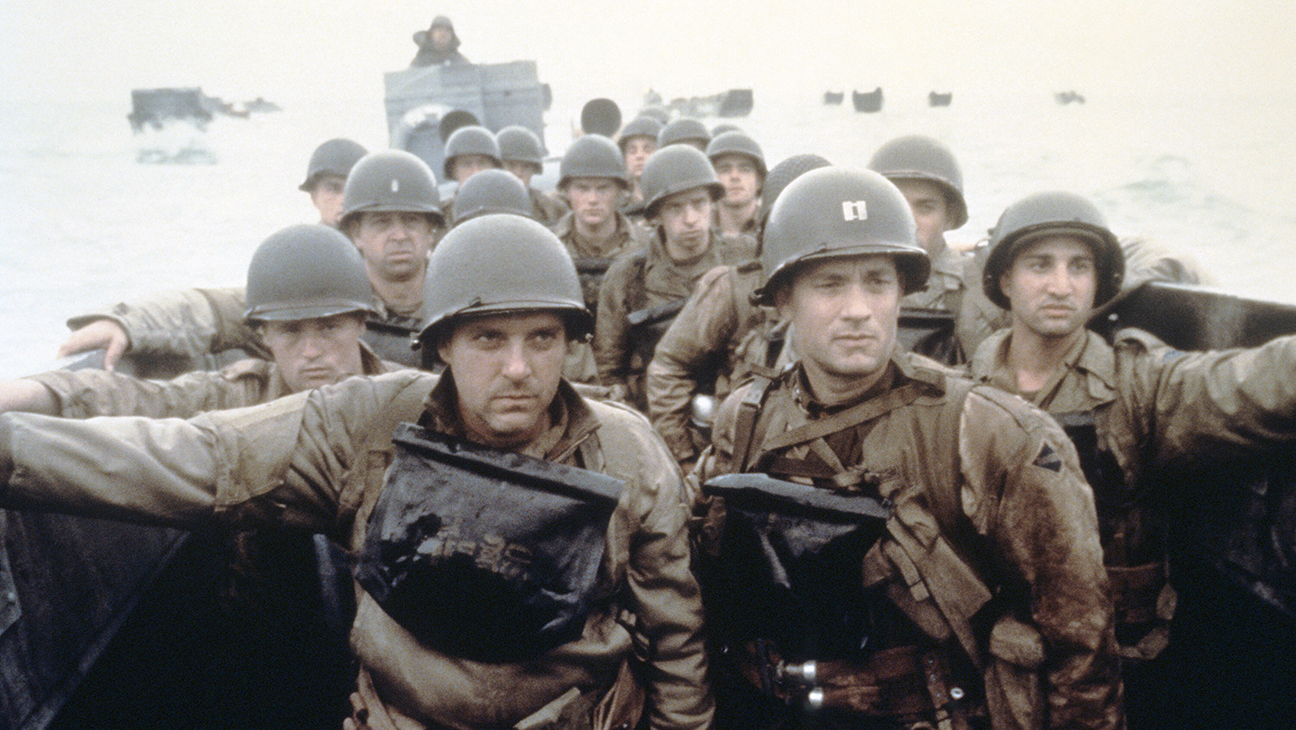Movie Review – Saving Private Ryan
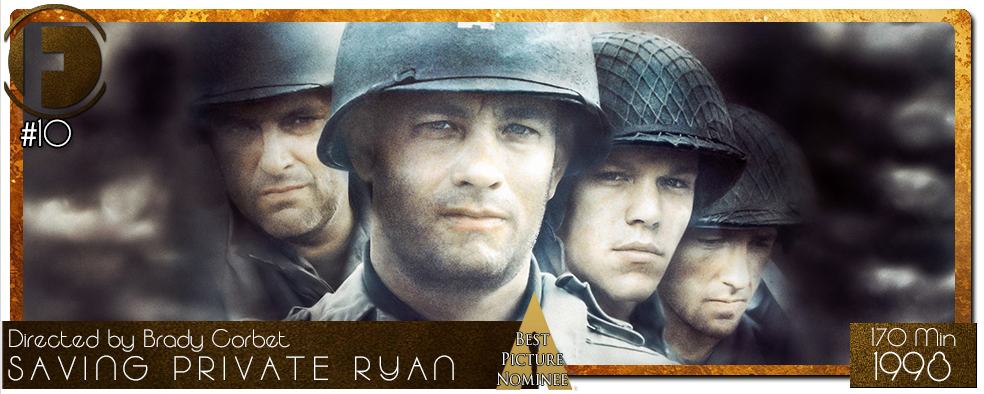
Principal Cast : Tom Hanks, Edward Burns, Tom Sizemore, JeremY Davies, Vin Diesel, Adam Goldberg, Barry Pepper, Giovanni Ribisi, Matt Damon, Dennis Farina, Ted Danson, Harve Presnell, Bryan Cranston, David Wohl, Nathan Fillion, Paul Giamatti, Ryan Hurst, Max Martini, Leland Orser, Harrison Young.
Synopsis: Following the Normandy Landings, a group of U.S. soldiers go behind enemy lines to retrieve a paratrooper whose brothers have been killed in action.
********
War is hell. And until Steven Spielberg got involved, we’d never truly experienced war through the eyes of a soldier. Filmmakers as diverse as Francis Ford Coppola and Oliver Stone had given us their interpretations, but they always seemed to maintain a safe distance. The viewer was taken on a journey, but not our own journey. Unlike Ron Kovic or Captain Willard, who undertake a journey for us, Spielberg attempted to give us our own experience of war without having to leave the cinema.
Saving Private Ryan, which graphically portrays the D-Day landings of a group of US forces in 1944, opens with an assault on the senses unlike any we’d ever seen. It thrusts us into the heat of battle, the confusion and carnage of an assault that beggars description. It wants us to know exactly what war is really like. The film’s now-iconic opening sequence—an unrelenting, blood-soaked depiction of the Normandy invasion—changed the way war was depicted on screen forever.
D-Day: The Brutality
Imagine going into battle, the tension and outright terror sweeping through you like a cresting wave. You stand with your platoon as your boat comes into sight of the shore, the crack of gunfire and howl of passing bullets sending shivers of fear into your very core. A whistle blows, the bow of the boat flings open, and before you lies the beach, erupting into enormous gouts of sand and body parts. Those who came before you are shredded across the sand like so much mincemeat. You grab your rifle, the only defence you have, and hurl yourself into the icy waters behind your fellow soldiers. Your friends fall around you, bullets pummelling them backwards, downwards, into the water and sand. Blood fills the sea, the stench of ammunition wafts through the air as you navigate the hail of bullets to a vantage point from where you can regroup. The screams of the dying reverberate in your ears, grown men reduced to whimpering child-cries, wailing for their mothers as they scoop their internal organs off the ground. The roar of artillery and the krump krump of explosives deafen you. You know that any moment you too could join the hundreds of men lying prone along the once pristine beachhead.
Such is the opening to Saving Private Ryan, a tour de force of filmmaking that put the viewer into the middle of the D-Day landings on the beaches of Normandy. Bloody, dirty, and as realistic a sequence as had ever been committed to film at that point, it fundamentally changed our perception of war. A collective shift occurred in that single, brutal 20-minute opening salvo: suddenly, war films weren’t about heroics and glory, but about survival and sheer brutality. Spielberg’s now-celebrated anti-war film almost singlehandedly revolutionised the style and look of every war film that followed, from the horror of Black Hawk Down to the carnage and desolation of Band of Brothers. Finally, the brutality of pure warfare, stripped of macho bravado and clichéd jut-jawed pontification, had been revealed—and to those of us inexperienced in it, it was truly awful.
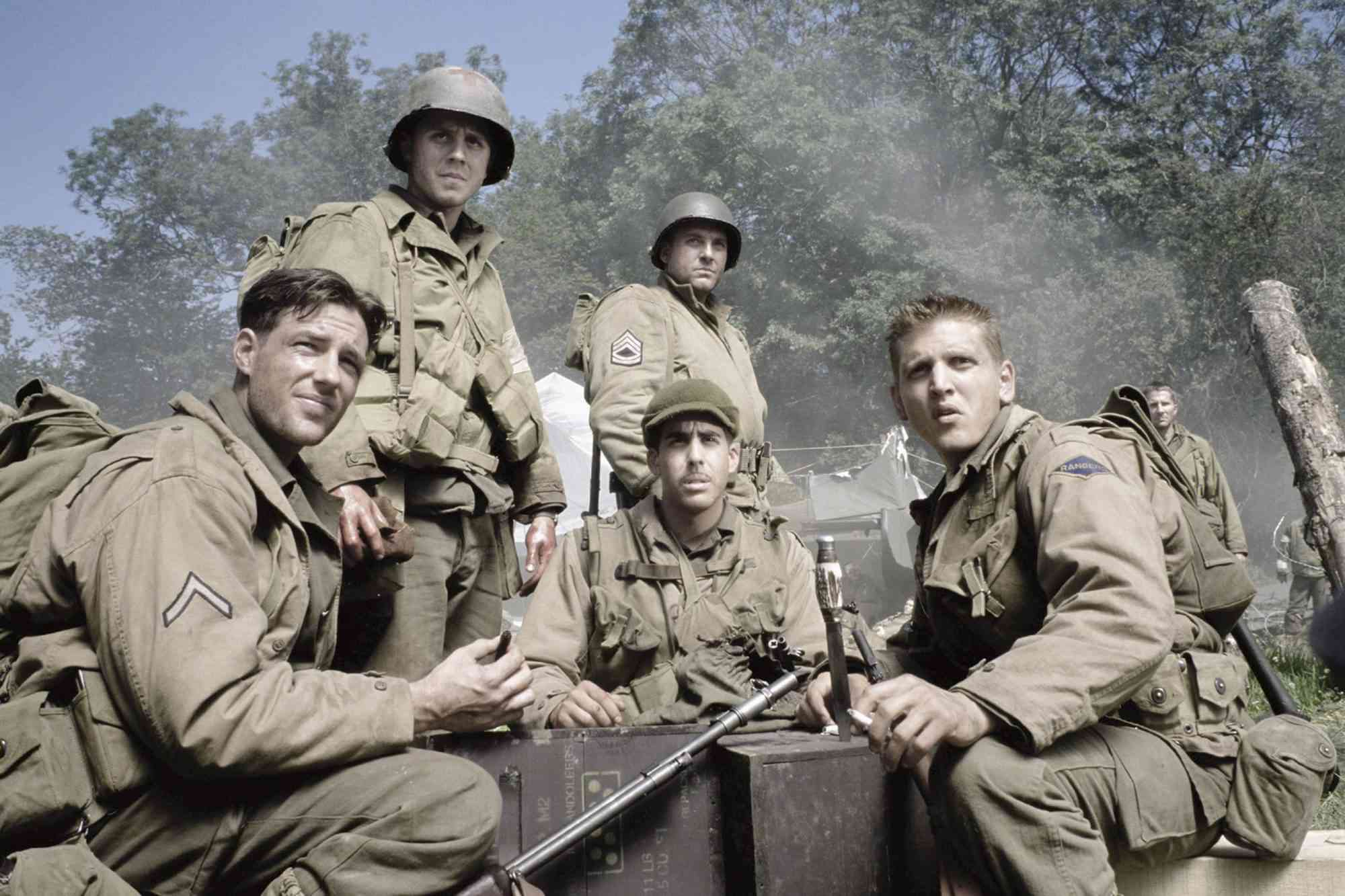
The Mission
Once the opening sequence comes to a close, Saving Private Ryan shifts into more traditional territory when the surviving group of soldiers, led by a stoic Tom Hanks, are sent on a mission to find a missing soldier somewhere in occupied France so he can be sent home. Private Ryan is unaware his three brothers have been killed in action, and the powers-that-be have decided that their mother should not be left without any offspring: thus, the politically charged mission to rescue the wayward soldier. Within this story, we are introduced to the characters of the platoon charged with this duty and come to understand the bravery and primal friendships they strike up as they manoeuvre through enemy lines.
Spielberg is a master storyteller, as almost everybody in the world will attest to. Some of his films have fared better than others, but it’s an undeniable fact that the man knows how to pull an audience along with him for the ride. Saving Private Ryan is one of those films that grabs you by the throat, tosses you around like a dog with a child’s toy, and tries to swallow you without chewing. It’s visceral and confronting at times, although at its quietest it still skirts the depth of emotion and character that would have made this a truly transcendent cinematic experience.
The film boasts a strong ensemble cast, all vying for their characters to develop on-screen beyond the clichéd. Hanks, as the leader, gets the lion’s share of development, and it’s primarily through him that we journey on this film. Jeremy Davies’ Private Upham serves as the audience’s surrogate, an outsider to the seasoned group who must learn the cost of war first-hand. The rest of the squad—including Barry Pepper, Vin Diesel, Tom Sizemore, Edward Burns, Adam Goldberg, and Giovanni Ribisi—each contribute to the film’s emotional weight, though their arcs are largely secondary to the overarching narrative.
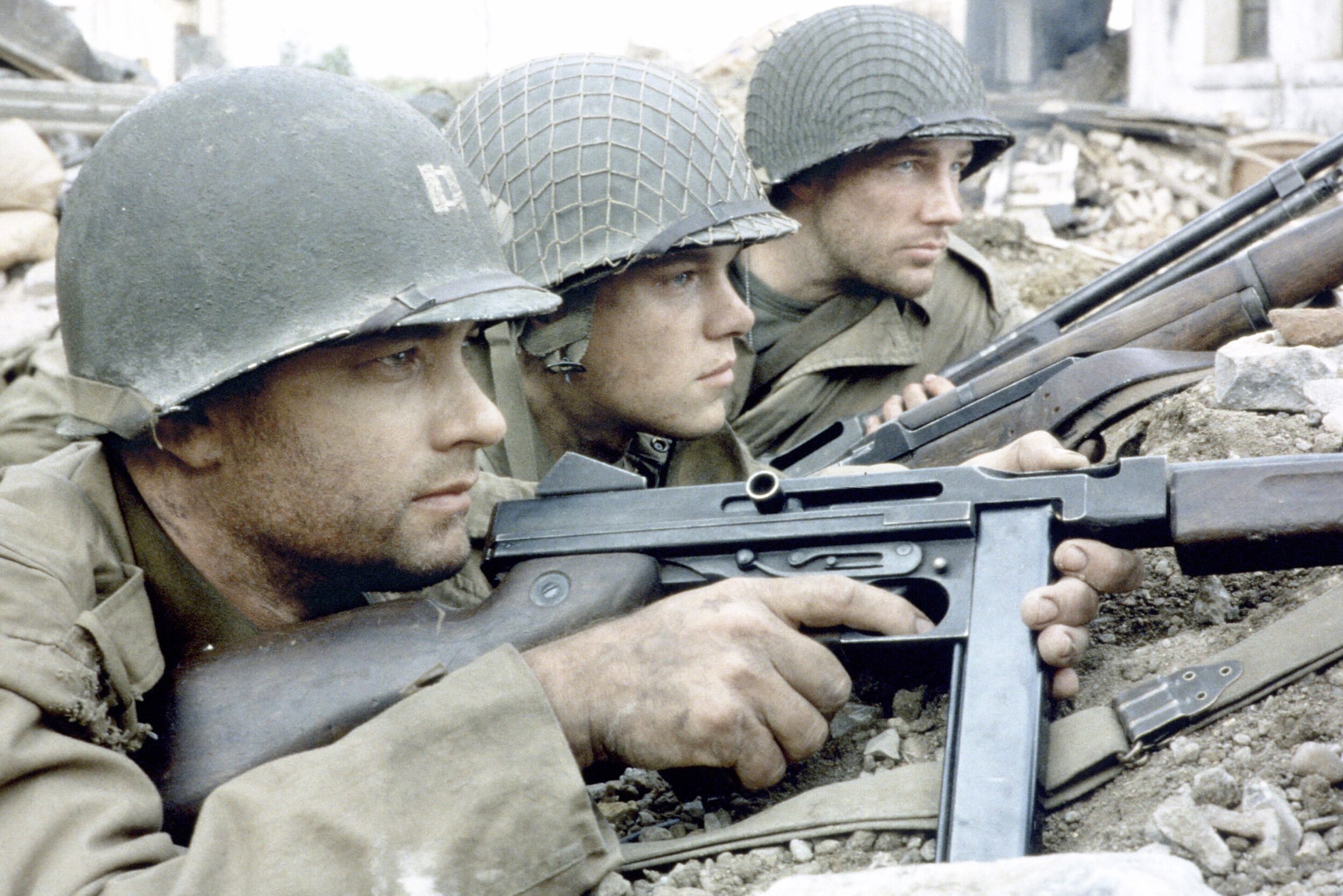
The Lasting Impact
While Saving Private Ryan is a cohesive and structured narrative, it is not without fault. In its quieter moments, the film missteps in its emotional weight. This is not a fault with anyone in particular, but rather the consequence of balancing such visceral, kinetic action with the necessary human drama. The general banter of the soldiers as they traverse the countryside is amusing, and their peril unbelievably great, but we don’t quite get the emotional connection with all of them as deeply as we might want.
However, these are minor quibbles in an otherwise landmark film. The sheer power of Spielberg’s direction, combined with Janusz Kaminski’s cinematography and John Williams’ stirring score, elevate Saving Private Ryan beyond mere spectacle. The film’s de-saturated colour palette, its handheld cinematography, and its raw, unflinching violence have since become the gold standard for war films. The visceral, shaky-cam battle sequences have been endlessly emulated—often to the point of cliché—but Saving Private Ryan did it first, and it did it best.
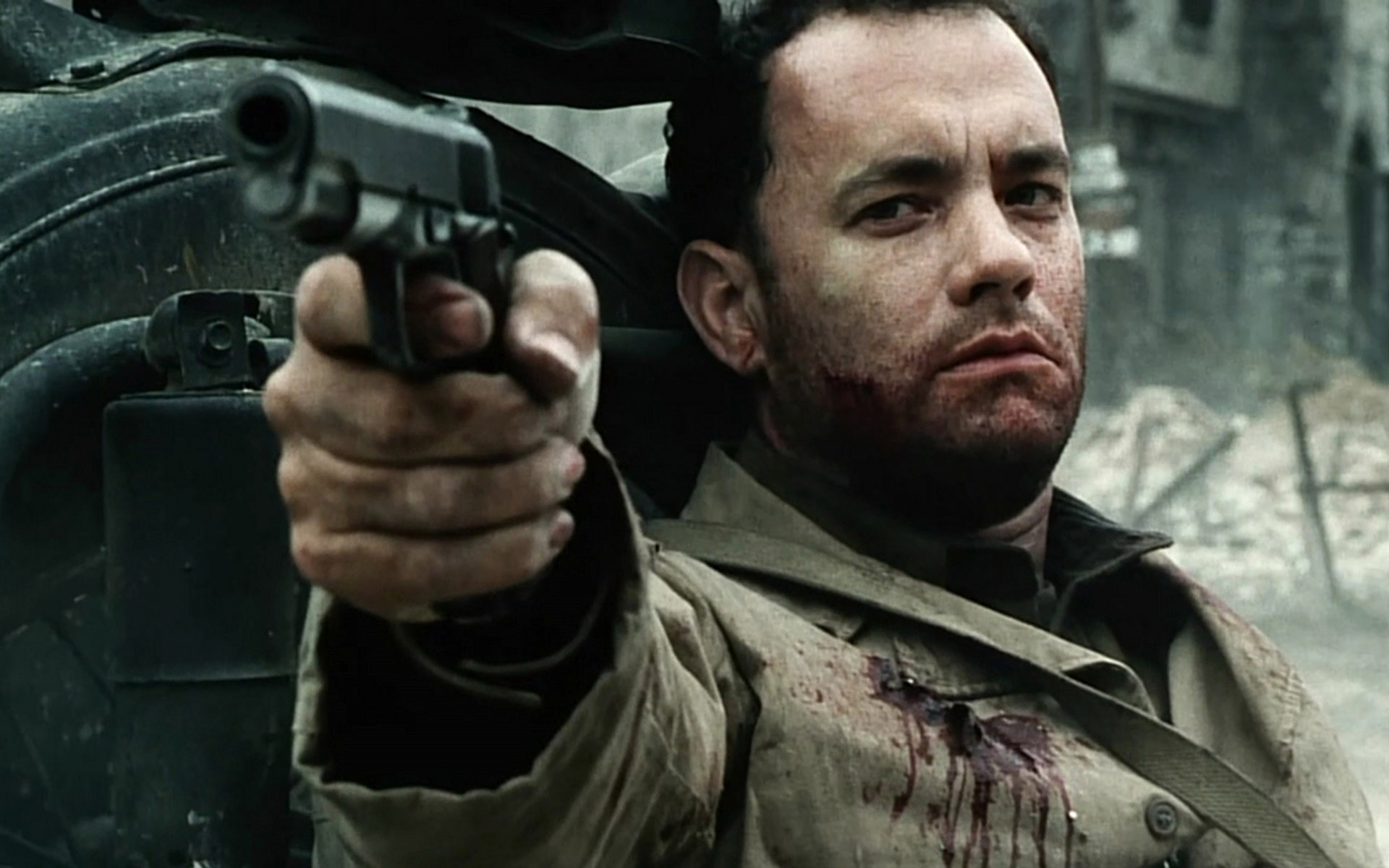
Conclusion
Saving Private Ryan was a landmark film in many ways, mainly for the way in which it revolutionised the war genre and gave it a genuine shot of adrenaline going forward. The ante had been upped, and once again, it had been Spielberg at the forefront.
It remains one of the greatest war films ever made, not just for its technical brilliance but for the way it forces us to confront the horrors of war. The opening sequence alone is enough to cement its place in cinematic history, but beyond that, it is a film of remarkable tension, heartbreak, and humanity.
Brutal. Relentless. Necessary. Saving Private Ryan is a cinematic experience like no other, and one that ensures we never forget the true cost of war.

